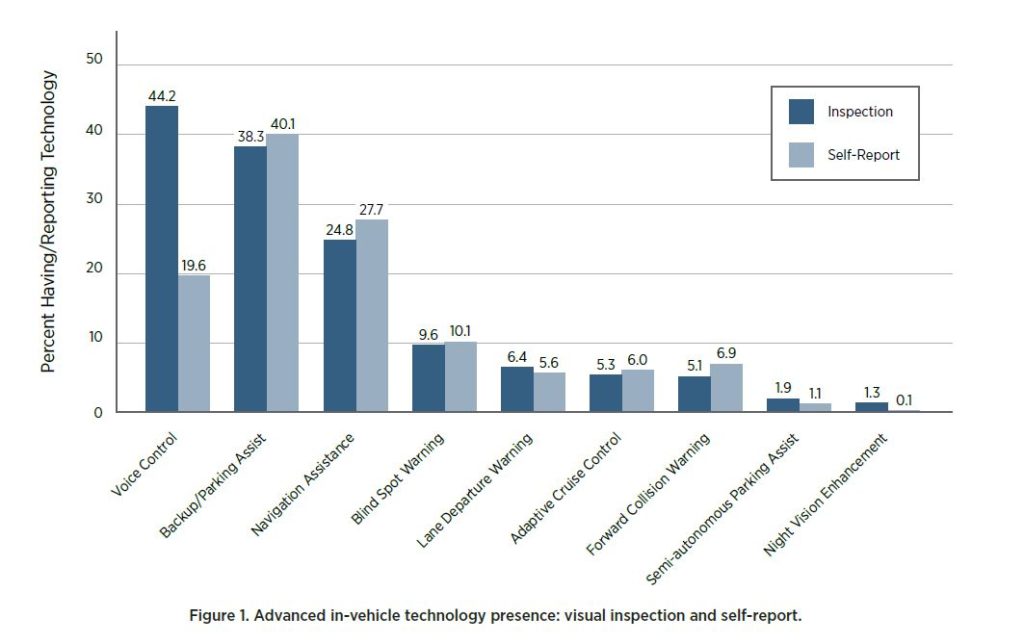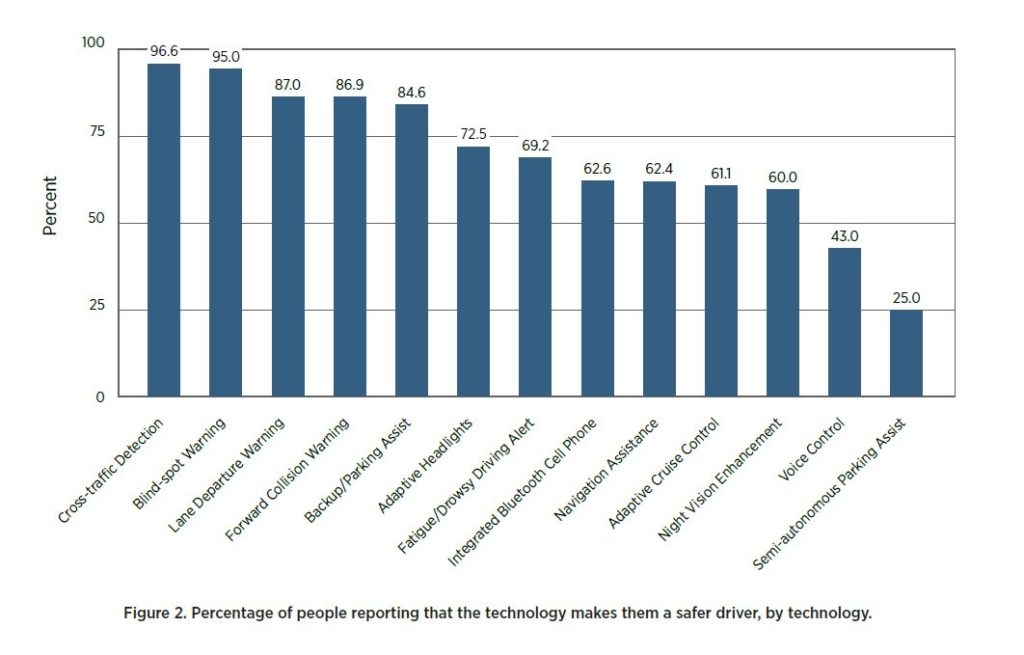
Older Drivers and Advanced Driver Assistance Systems
This research brief describes the efforts to address questions on driver perception of and learning methods for advanced driver assistance systems using data from AAA Longitudinal Research on Aging Drivers (AAA LongROAD) studies.
December 2020
Suggested Citation
Abstract
Introduction
Automotive technologies and advanced driver assistance systems (ADAS) have the potential to help older drivers become more confident behind the wheel and extend their safe mobility. However, these technologies vary widely in complexity and scope, and questions remain about drivers’ perceptions and how they learn to use these systems. This brief describes the efforts to address these questions using results from AAA Longitudinal Research on Aging Drivers (AAA LongROAD) studies.
Key Findings
AAA LongROAD studies have examined in-vehicle technologies owned and used by older drivers and have begun to shed some light on this topic (Eby et al., 2018; Zanier et al., 2019). Key findings from these studies include the following:
How aware are older drivers of these systems in their current vehicles?
- There was high agreement between which technologies participants reported were present in their vehicles and which were found during vehicle inspections, with the exception of voice control technologies (Zanier et al., 2019).

What is the user acceptance of these technologies among older adults?
- More than half (57.2%) of the AAA LongROAD participants had at least one advanced in-vehicle technology in their primary vehicles, and on average they had two such technologies (Eby et al., 2018).
- Participants commonly reported having integrated Bluetooth (47.4%), backup/parking assist (40.1%), and navigation assistance systems (27.7%) in their vehicles (Eby et al., 2018).
- A majority (70%) of the AAA LongROAD participants who had at least one vehicle technology reported that it made them a safer driver (Eby et al., 2018).

How do older drivers learn about system functions and limitations?
- Most commonly, participants reported learning how to use advanced in-vehicle technology by “figuring it out themselves” (48.9%), followed by through the dealer (19.8%). Another 13.2% noted they never learned how to use the technology, while 11.8% stated that they learned how to use the technology through an owner’s manual (Eby et al., 2018).
How do demographics impact the presence of and learning to use these systems?
- For six of the technologies (adaptive cruise control, forward collision warning, integrated Bluetooth, navigation assistance, semi-autonomous parking assist, and voice control), women, compared to men, were more likely to report never having learned to use the technology and were less likely to report learning from the owner’s manual or figuring it out themselves. Additionally, men tended to have a greater number of technologies in their primary vehicle (Eby et al., 2018).
- As the incomes of older drivers increased, so did the number of advanced in-vehicle technologies (Zanier et al., 2019).
Methodology
This research brief summarizes the results of AAA LongROAD studies on older drivers and in-vehicle technologies. The AAA LongROAD study recruited 2,990 participants, aged 65–79 at baseline, from five health-care locations. Data collected in the AAA LongROAD study includes information obtained from vehicle inspections, participants’ self-reported surveys on the presence and perceptions of in-vehicle technology, and objective data on cognitive functioning obtained from clinical assessments (Li et al., 2017).
References
Eby, D.W., Molnar, L. J., Zakrajsek, J.S., Ryan, L.H., Zanier, N., St. Louis, R.M., … Yung, R. (2018). Prevalence, attitudes, and knowledge of in-vehicle technologies and vehicle adaptations among older drivers. Accident Analysis & Prevention, 113, 54-62.
Li, G., Eby, D.W., Santos, R., Mielenz, T.J., Molnar, L.J., Strogatz, D., … Pitts, S.I. (2017). Longitudinal Research on Aging Drivers (LongROAD): study design and methods. Injury epidemiology, 4(1), p.22.
Zanier, N., Molnar, L.J., Eby, D.W., Kostyniuk, L.P., Zakrajsek, J.S., Ryan, L.H.,, … Yung, R. (2019) “Improving safe mobility: an assessment of vehicles and technologies among a large cohort of older drivers.” Occupational therapy in health care, 33(1), 1-21.
Suggested Citation